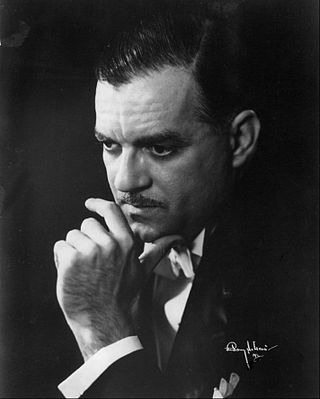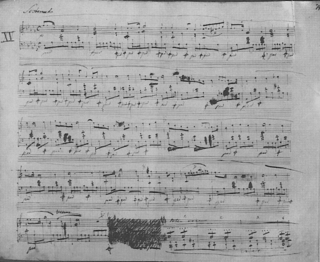External links
- "Burkhart, Charles", Southern Illinois University Special Collections Research Center.
Charles Burkhart (born 29 May 1928) is an American musicologist, theorist, composer, and pianist. He holds the title of Professor Emeritus in the Aaron Copland School of Music, Queens College, and the Graduate Center, City University of New York. [1] He is known especially as a scholar in Schenkerian analysis and as a successful lecturer and master class presenter.
Burkhart was a student of Felix Salzer. [2] He holds a M.Mus. degree from Yale University. [3] His M.A. thesis for Colorado College, written in 1952, [4] concentrated on the musical culture of Old Order Amish and of Old Colony Mennonites. [5] Among Burkhart's many students are Channan Willner, Stephen Lindeman, Stephen Slottow, Roy Nitzberg, William Renwick, and Gary S. Karpinski.
Burkhart is known for work on the relations between Schenkerian readings, analysis of rhythm and meter, and implications for performance. Most of the compositions he discusses are for keyboard, especially Bach, Beethoven, and Chopin, but he has also written about opera ( Don Giovanni ) and song cycles (Schumann's Liederkreis, Op. 39). [6]
A frequently cited article is regarded as the "classic treatment" [7] of motivic parallelisms in Schenkerian analysis. Burkhart introduces the term " Ursatz parallelism" [8] —when a motive in a small span of music (foreground) duplicates one covering a far longer span (background)—but because of its generality (and the abstract nature of the Ursatz) such a figure alone normally does not create significant motivic associations within a composition. Thus, it is more productive to focus on how "motivic parallelisms operate within individual pieces" rather than as symptoms of a tonal system. [9] Burkhart finds that the motivic parallelisms of various surface motives and their "hidden repetitions" in middle-level segments are "much more unusual and interesting." An oft-cited example relates brief motives in the first two bars of Chopin's Nocturne in F♯ major, Op. 15, No. 2, to larger spans: a neighbor-note figure that is also the frame of the melody in bars 1–16; and an arpeggiated chord that is also stretched across bars 1–45. [10] As Burkhart notes, it is common—as in these examples—for the smaller motive to be nested inside the larger parallelism. The limit in breadth of such parallelisms may be found in another oft-cited example: Schubert's "Erlkönig", where Burkhart finds that two motives in the piano's introduction map onto the key sequence of the entire song. [11]
Burkhart's compositions include some organ preludes [5] and choruses he has composed and arranged. [12]
Schenkerian analysis is a method of analyzing tonal music based on the theories of Heinrich Schenker (1868–1935). The goal is to demonstrate the organic coherence of the work by showing how the "foreground" relates to an abstracted deep structure, the Ursatz. This primal structure is roughly the same for any tonal work, but a Schenkerian analysis shows how, in each individual case, that structure develops into a unique work at the foreground. A key theoretical concept is "tonal space". The intervals between the notes of the tonic triad in the background form a tonal space that is filled with passing and neighbour tones, producing new triads and new tonal spaces that are open for further elaborations until the "surface" of the work is reached.

Jorge Bolet was a Cuban-born American concert pianist, conductor and teacher. Among his teachers were Leopold Godowsky, and Moriz Rosenthal – the latter an outstanding pupil of Franz Liszt.

Murray David Perahia is an American pianist and conductor. He is widely considered one of the greatest living pianists. He was the first North American pianist to win the Leeds International Piano Competition, in 1972. Known as a leading interpreter of Bach, Handel, Scarlatti, Mozart, Beethoven, and Schumann, among other composers, Perahia has won numerous awards, including three Grammy Awards from a total of 18 nominations, and 9 Gramophone Awards in addition to its first and only "Piano Award".
Voice leading is the linear progression of individual melodic lines and their interaction with one another to create harmonies, typically in accordance with the principles of common-practice harmony and counterpoint.
Felix Salzer was an Austrian-American music theorist, musicologist and pedagogue. He was one of the principal followers of Heinrich Schenker, and did much to refine and explain Schenkerian analysis after Schenker's death.
In music theory, prolongation is the process in tonal music through which a pitch, interval, or consonant triad is considered to govern spans of music when not physically sounding. It is a central principle in the music-analytic methodology of Schenkerian analysis, conceived by Austrian theorist Heinrich Schenker. The English term usually translates Schenker's Auskomponierung. According to Fred Lerdahl, "The term 'prolongation' [...] usually means 'composing out' ."

Frédéric Chopin wrote a number of preludes for piano solo. His cycle of 24 Preludes, Op. 28, covers all major and minor keys. In addition, Chopin wrote three other preludes: a prelude in C♯ minor, Op. 45; a piece in A♭ major from 1834; and an unfinished piece in E♭ minor. These are sometimes referred to as Nos. 25, 26, and 27, respectively.
Carl E. Schachter is an American music theorist noted for his expertise in Schenkerian analysis.

In Schenkerian analysis, the fundamental structure describes the structure of a tonal work as it occurs at the most remote level and in the most abstract form. A basic elaboration of the tonic triad, it consists of the fundamental line accompanied by the bass arpeggiation. Hence the fundamental structure, like the fundamental line itself, takes one of three forms, according to which tonic triad pitch is the primary tone. The example hereby shows a fundamental structure in C major, with the fundamental line descending from scale degree :
The Urlinie offers the unfurling (Auswicklung) of a basic triad, it presents tonality on horizontal paths. The tonal system, too, flows into these as well, a system intended to bring purposeful order into the world of chords through its selection of the harmonic degrees. The mediator between the horizontal formulation of tonality presented by the Urlinie and the vertical formulation presented by the harmonic degrees is voice leading.
The upper voice of a fundamental structure, which is the fundamental line, utilizes the descending direction; the lower voice, which is the bass arpeggiation through the fifth, takes the ascending direction. [...] The combination of fundamental line and bass arpeggiation constitutes a unity. [...] Neither the fundamental line nor the bass arpeggiation can stand alone. Only when acting together, when unified in a contrapuntal structure, do they produce art.
Sergio Fiorentino was a 20th-century Italian classical pianist whose sporadic performing career spanned five decades. There is quite a bit of footage of his playing that survives, in addition to audio recordings. Recently, a complete concert recorded on video in 1994 has surfaced.
Progressive tonality is the music compositional practice whereby a piece of music does not finish in the key in which it began, but instead 'progresses' to an ending in a different key or tonality. In this connection 'different key' means a different tonic, rather than merely a change to a different mode : Gustav Mahler's Second Symphony (1888–94), for example, which moves from a C minor start to an E-flat major conclusion, exhibits 'progressive tonality'—whereas Ludwig van Beethoven's Fifth Symphony (1804–08), which begins in C minor and ends in C major, does not. A work which ends in the key in which it began may be described as exhibiting 'concentric tonality'. The terms 'progressive' and 'concentric' were both introduced into musicology by Dika Newlin in her book Bruckner, Mahler, Schoenberg (1947).
Arabesque Records is an American record company and label specializing in jazz and classical music.
The Journal of Schenkerian Studies is a peer-reviewed academic journal specializing in music theory and analysis, with a particular focus on Schenkerian analysis based on the ideas of Heinrich Schenker. It is published by the Center for Schenkerian Studies at the University of North Texas College of Music. Its first issue was published in 2005, under editor-in-chief Jennifer Sadoff. As of 2020, it has a paid circulation of approximately 30 copies per issue.
Music Forum was an academic journal specializing in music theory and analysis, with a particular focus on Schenkerian theory and analysis. It was published between 1967 and 1987.

In Schenkerian analysis, a structural level is a representation of a piece of music at a different level of abstraction, with levels typically including foreground, middleground, and background. According to Schenker musical form is "an energy transformation, as a transformation of the forces that flow from background to foreground through the levels."

Sylvan (Sholom) Kalib is an American music theorist, musicologist, cantor, conductor, pedagogue and composer. His primary work falls broadly into two categories: 1) Schenkerian music theory and 2) the musical tradition of the Eastern European synagogue.
This is a glossary of Schenkerian analysis, a method of musical analysis of tonal music based on the theories of Heinrich Schenker (1868–1935). The method is discussed in the concerned article and no attempt is made here to summarize it. Similarly, the entries below whenever possible link to other articles where the concepts are described with more details, and the definitions are kept here to a minimum.
Ernst Oster was a German pianist, musicologist, and music theorist. A specialist in the use of Schenkerian Analysis, he was the English translator of Heinrich Schenker's final work, Free Composition.

Timothy L. Jackson is an American professor of music theory who has spent most of his career at the University of North Texas and specializes in music of the eighteenth through twentieth centuries, Schenkerian theory, politics and music. He is the co-founder of the Journal of Schenkerian Studies. In 2020, he became controversial for editing a special issue of that journal containing articles criticizing Philip Ewell's plenary talk "Music Theory's White Racial Frame".
Matthew G. Brown is a British-American music theorist, musicologist, educator, and artistic director. He is Professor of Music Theory at Eastman School of Music.